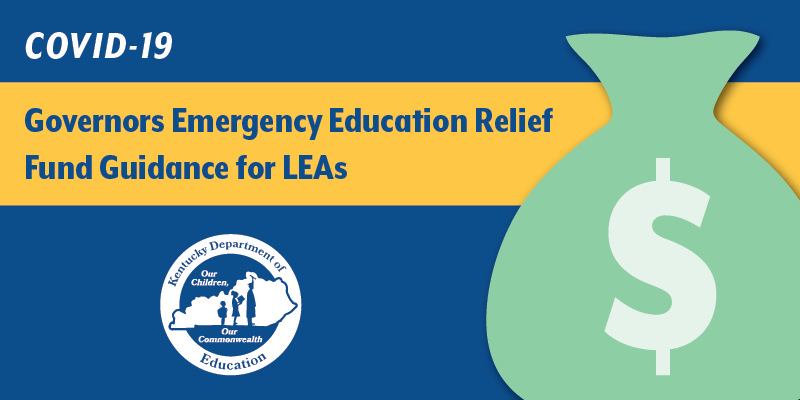
(FRANKFORT, KY) – The Kentucky Department of Education (KDE) released a new guidance document May 12 about the Governor’s Emergency Education Relief (GEER) Fund to help districts decide how best to spend the funding designed to help districts respond to the novel coronavirus (COVID-19) pandemic.
(GEER) was authorized by Section 18002 of the Coronavirus Aid, Relief and Economic Security Act (CARES) to provide emergency aid to states to combat the COVID-19 pandemic. Gov. Andy Beshear has allotted $30 million to be administered by the Kentucky Department of Education (KDE) and distributed to local education agencies (LEAs) for the purpose of expanding access to high-quality remote learning experiences through increased digital learning infrastructure and expanded remote food services to students.
The document – “COVID-19 Governors Emergency Education Relief Fund Guidance for LEAs” – provides guidance for schools and districts on how to evaluate their needs and considerations for special groups of students such as special education, gifted and talented, preschool and children in need of Extended School Services.
Since Kentucky is a local-control state, many of the decisions on how to move forward in this challenging time will be decided by local boards of education and school-based decision-making councils.
“We know these have been trying times for our schools, our districts and our state,” said Interim Commissioner Kevin C. Brown. “The Kentucky Department of Education’s staff has been working tirelessly since this pandemic began to provide the guidance our schools need to help them adapt to these constantly changing times and be prepared to keep providing their students the resources and high-quality instruction the Commonwealth’s students need and deserve.”
As the COVID-19 situation evolves, the guidance documents will continue to be updated and amended as required to meet the needs of Kentucky’s schools and districts.
KDE staff is continuing to provide information and support to educators, schools and districts to help ensure students are receiving high-quality instruction during the pandemic, which forced all of the state’s 172 public school districts to use the Non-Traditional Instruction Program. More guidance and resources can be found on the KDE COVID-19 website.
MORE INFO …
|